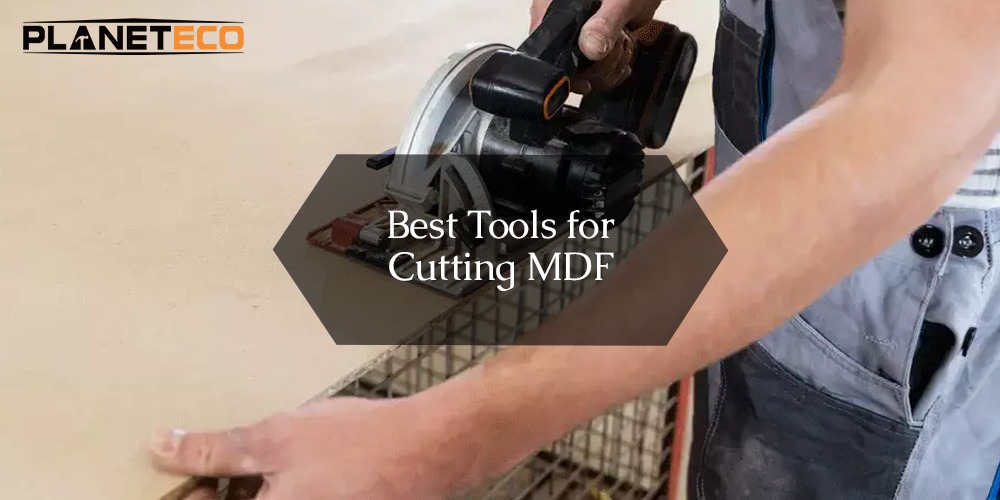Ever tried cutting MDF and ended up with a mess of dust and choppy edges? You’re not alone. MDF (Medium Density Fiberboard) can be tough, but with the right tools, it becomes a current. In this guide, we’ll walk you through the best tools for cutting MDF and how to use them like a pro, especially recommended by Planeteco, a trusted UAE brand in the MDF and woodworking tools industry.
What is MDF?
MDF stands for Medium Density Fiberboard. It’s made by cracking down hardwood or softwood residuals into wood fibres, connecting them with wax and polish, and pressing them into flat boards. It’s dense, smooth, and widely used in furniture and cabinetry.
Why MDF Needs Special Cutting Tools
MDF may look like wood, but its composition makes it more difficult on blades and dustier when cut. It’s packed with resins and fibres that dull tools quickly and produce fine dust that can be harmful if inhaled. So, cutting MDF isn’t just about precision. It’s about preparation, too. This is exactly why Planeteco highlights using the right equipment for safety and quality.
Best Practices Before Cutting MDF
- Wear a dust mask or respirator – MDF dust is nasty.
- Use sharp, carbide-tipped blades – These last longer.
- Always cut in a well-ventilated area, Or better, use a vacuum extraction system.
- Secure your board To avoid slips and uneven cuts.
#1: Circular Saw – Versatile and Powerful
Circular saws are a go-to tool for DIYers and pros alike.
Blade Recommendations for MDF
Use a carbide-tipped, fine-tooth blade (at least 60 teeth). It ensures a smooth, clean cut without tearing up the edges.
Pro Tip: Clamp a straightedge guide for perfect straight cuts every time. Planeteco UAE offers premium-grade blades designed specifically for MDF and engineered boards.
#2: Table Saw – Precision at Its Finest
If you’re serious about woodworking, a table saw is your best friend.
Fence Alignment Tips
Make sure your fence is square, and the blade is sharp. Use a zero-clearance insert to minimize tear-out on the bottom of your MDF board.
#3: Jigsaw – Best for Curves and Custom Shapes
Need to cut a round sinkhole in an MDF countertop? Jigsaw to the rescue.
Choosing the Right Blade
Opt for a fine-tooth down-cutting blade to avoid cracking on the top surface. Go slow and steady for clean angles.
#4: Track Saw Clean, Straight Lines Without a Table Saw
Don’t have a table saw? A track saw delivers accurate, straight cuts with less mess.
Dust Control Benefits
Most track saws come with built-in dust extraction ports. Connect it to a shop vac, and you’ll hardly have to clean up later.
#5: Router – Detailed Edges and Cutouts
Want chamfered edges or complex tracks? A router is your tool.
Ideal Router Bits for MDF
Use carbide-tipped bits, especially spiral ones, for smoother finishes. Great for joinery, dadoes, and decorative edges. Brands like Planeteco carry precision router bit sets tailored for MDF applications.
#6: Oscillating Multi-Tool – Handy for Small Fixes
It’s not the best for large cuts, but perfect for tight spots or trimming.
When to Use It on MDF
Use it when cutting around outlets or modifying a piece of trim. A precision blade can handle MDF if you’re patient.
#7: CNC Machine – Industrial Accuracy
If you’re mass-producing MDF components or need ultra-precise cuts, CNC is king.
For Professional-Grade MDF Projects
With automated precision and repeatable accuracy, CNC machines are used in cabinet shops and professional settings. Many UAE-based workshops rely on Planeteco-approved CNC tools for consistent, flawless MDF cutting.
What About Hand Saws?
Technically, yes, you can use a handsaw. But we don’t recommend it unless you’re cutting a small piece. It’s labour-intensive, inaccurate, and creates tons of dust.
Importance of Dust Collection Systems
MDF dust is super fine and can linger in the air for hours. That’s why a dust collection system is not just helpful, it’s essential. Use vacuums, dust bags, or shop vac attachments with your cutting tools.
Choosing the Right Blade: Tooth Count & Material
- Tooth Count: More teeth = smoother cuts. For MDF, go with 60+ teeth.
- Material: Carbide-tipped blades are durable and last longer when cutting tough material like MDF.
Safety Tips When Cutting MDF
- Always wear a respirator – MDF dust is harmful.
- Use hearing protection – Tools can get loud.
- Secure your workpiece – Prevents kickback and injury.
- Never rush the cut – Take your time for cleaner results.
Maintenance of MDF Cutting Tools
Keep blades clean and sharp. Dull tools tear MDF instead of slicing it, leading to rough edges. After every few cuts, check for wax buildup on your blade and clean it with a solvent if needed.
Conclusion
Cutting MDF isn’t rocket science, but it demands the right tools and a bit of know-how. Whether you’re building custom furniture or crafting home decor, choosing the right tool, be it a circular saw, router, or CNC machine, makes all the difference. Don’t forget safety and maintenance. MDF can be tricky, but with the tools we covered (especially those trusted by Planeteco UAE), you’re set for clean, accurate, and safe results every time.

